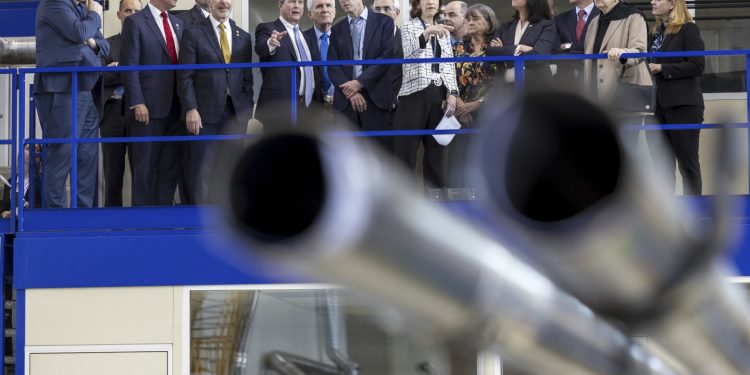Geneva (AP) – The best minds of the largest atom in Smasher in the world have published a plan for A much larger successor This could considerably improve research on the remaining puzzles of physics.
The plans for the future circular collision – a loop of almost 91 kilometers (56.5 miles) along the French border -Siss and below Lake Geneva – published late Monday, put the details finished on a project approximately a decade of manufacturing in CERN, the European organization for nuclear research.
The FCC would carry out high -precision experiences in the mid -2040s to study “known physics” in more detail, then entered a second phase – planned for 2070 – which would lead high energy collisions of heavy and heavy ions which “would open the door to the unknown,” said Giorgio Chiarelli, director of research at the National Institute of Nuclear Physics.
“The history of physics indicates that when there is more data, human ingenuity is able to extract more information than expected,” said Chiarelli, who was not involved in the plans, in an email.
For about a decade, the best minds of CERN have made plans for a successor to the great collision of Hadrons, a network of magnets who accelerate the particles through an underground tunnel of 27 kilometers (17 miles) and slam them at speeds approaching the speed of light.
“In the end, what we would like to do is a collision that will offer 10 times more energy than what we have today,” said Arnaud Marsollier, CERN spokesperson. “When you have more energy, you can create heavier particles.”
The plan provides the proposed path, the environmental impact, scientific ambitions and the cost of the project. Independent experts will take a look before the two dozen CERN member countries – all of Europeans with the exception of Israel – decided in 2028 if it were necessary to go ahead, from the mid -2040s at a cost of around 14 billion Swiss francs (around 16 billion dollars).
CERN officials boast the promise of scientific discoveries that could stimulate innovation in fields such as cryogeny, superconductive magnets and empty technologies that could benefit humanity.
External experts highlight the promise of knowing more about the Higgs boson,, the elusive particle This was controversial “the particle of God”, which helped to explain how the matter was formed after the Big Bang.
Work at the College of Particles Confirmed in 2013 the existence of the Higgs Boson – The central room of a puzzle known as the standard model that helps explains certain fundamental forces in the universe.
“This set of reports represents an important step in the process, but a complete feeling of the probability of concluding will only be known by meticulous studies of scientists, engineers and others, including politicians who must make difficult decisions when uncertainty reigns the day,” said Dave Toback, professor of physics and astronomy at the Texas A & M, said in an email.
The new collision “offers an exciting opportunity for the community of particle physics, and in fact all physics, on the world scene,” said Toback, who was not affiliated with plans, and who worked for years at the Fermilab Tevatron Collider in the United States which was closed in 2011.
The scientists, engineers and CERN partners behind the plans considered at least 100 scenarios for the new collisionman before finding the proposed circumference of 91 kilometers at an average depth of 200 meters (656 feet). The tunnel would have a diameter of about 5 meters (16 feet), said CERN.


